Read by millions – translated into German, Japanese, Chinese
Are you confused by all the theories, claims, opinions, and reviews about dive fins? If not, maybe you should be. Kicking is your primary physical activity when diving, and the efficiency of your fins and your comfort in the water affects your bottom time more than almost anything else. Dive fins are one of your most important pieces of equipment. But over the years, a lot of myths and misinformation have built up about them.
We’ve been designing and making improvements to fins for over 30 years, with millions of satisfied customers, and many major product design awards under our belts, we can honestly say that we are the experts in fin design. That’s all we do, and we think our innovative fins are without equal in terms of comfort, efficiency, durability, performance, versatility and sheer value for your money. We pioneered fin colors, extended heel sections, leading edges, water channeling and accelerating through a split and V shape, fin adjustability, flexibility, and the use of snappy and high-performance materials, such as polyurethane. Just about every change and development in the way divers think about moving through water today came from Bob Evans and his Force Fins.
Pain & Suffering A Thing of the Past
One of the most common complaints that people have about diving is that their feet and legs hurt when they try to kick with today’s long or stiff fins. Their arches or calves cramp, their toes are smashed into the end of the foot pocket, their legs tire… Sound familiar? The primary cause of all this pain is that most fins are designed to concentrate much of the force from kicking on the smaller muscles of the lower leg and feet. And those muscles simply can’t take the stress of powering a large fin blade through the water. The result? Fatigue and cramping. But with the trail-blazing Force Fin, our unique foot-pocket design transfers much of the effort of moving the blade to the largest muscle group in your body, the quadriceps, removing pressure from the toes and feet. Because your entire leg is now doing the work, muscle fatigue and cramping is significantly reduced.
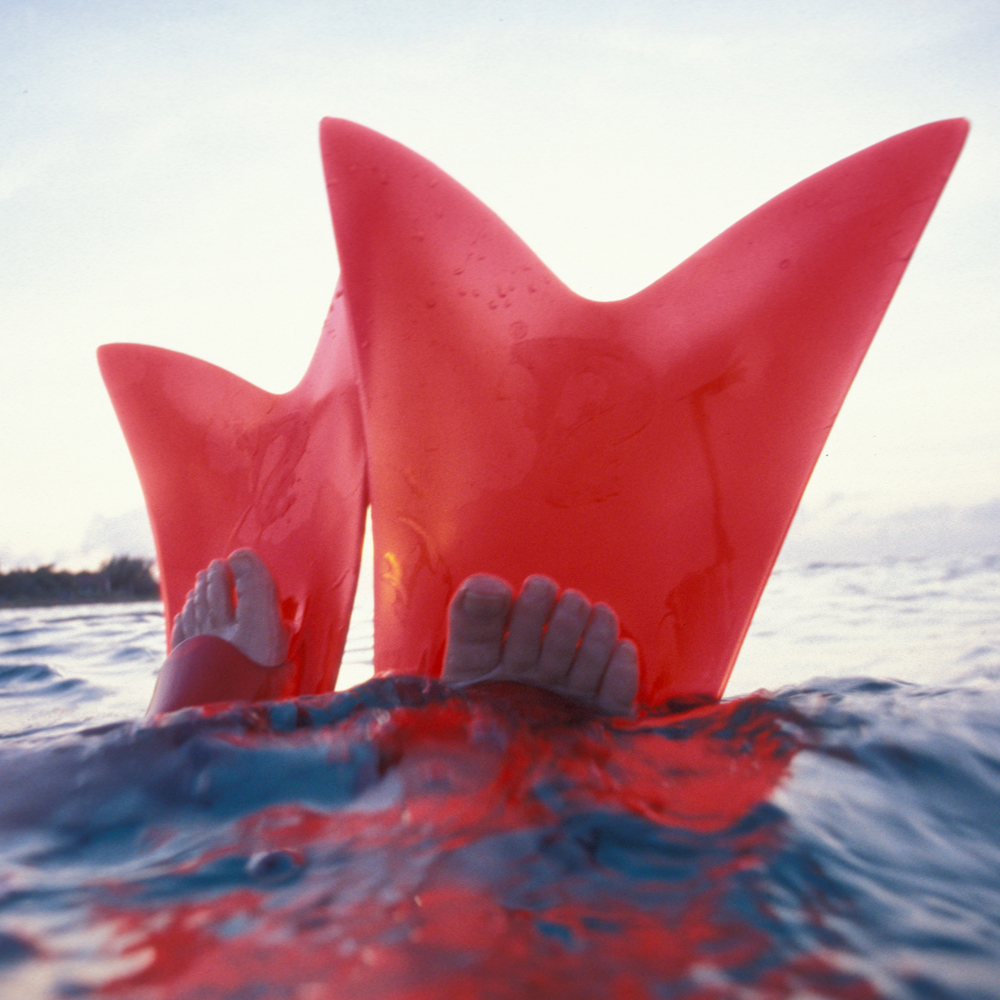
Force Fins are designed to let your toes really breathe, move and wiggle about like they’re meant to do. Because of our true, open foot pocket, your toes are finally free!

Try this simple test to see the difference between how our fins work with your body as compared to other brands. While seated, cross your ankle over your knee, grab your toes and pull them in the direction of the sole of your foot.
Do you feel the stretch and tension running from the top of your foot up and along the shin? Those are the primary muscles that other fins work because the fin blade extends forward of your arch, or off the end of your toes.

Now, hold the top of the foot – pull again toward the sole of the foot and resist with the leg. The tension has moved up to the upper leg, hasn’t it? Because of their unique design based on human biomechanics, Force Fins work the larger muscles of the upper leg in addition to the lower leg. These muscle groups are large and powerful. They are best equipped to efficiently power your fin blade.
Are “POWERFUL” Fins Really Better?
One of the biggest areas of confusion regarding fins is the notion of “power.” Many divers believe that the more they can feel their fins, the more they’re getting out of them. And to capitalize on this belief, many fin manufacturers have responded by making longer and stiffer (more “powerful”) fins that fool divers into thinking that they are generating more propulsion with less effort. However, the laws of physics don’t agree.
“Power” is a measure of energy expenditure. More power requires more energy, and more energy requires more effort, not less. A 100-watt light bulb is more powerful than a 60-watt bulb. It puts out more light, but it also uses more electricity and costs more to operate.
The same with fins. What divers believe to be power in fins is really resistance. That’s what you feel. “Powerful” fins rapidly waste your energy supplies and actually transfer a much smaller percentage of the effort into forward propulsion than you think.
Since the name of the game in diving is to decrease energy use (which decreases oxygen consumption and increases bottom time), it makes sense to use more efficient fins, not more “powerful” ones, as long as they do the job of moving you through the water.
The fact is, no fins have power. You are the power for your forward movement, the more you can feel your fins, the more energy you’re expending and the more you’re working for them, instead of having your fins work for you. Force Fins are specifically designed not to be felt; Force Fins are designed to work efficiently for you.
“Other fins make you work for drag slowing you down during the recovery or upstroke,
when the snap and curve of the Force Fin blade does the work for you in generating thrust.”
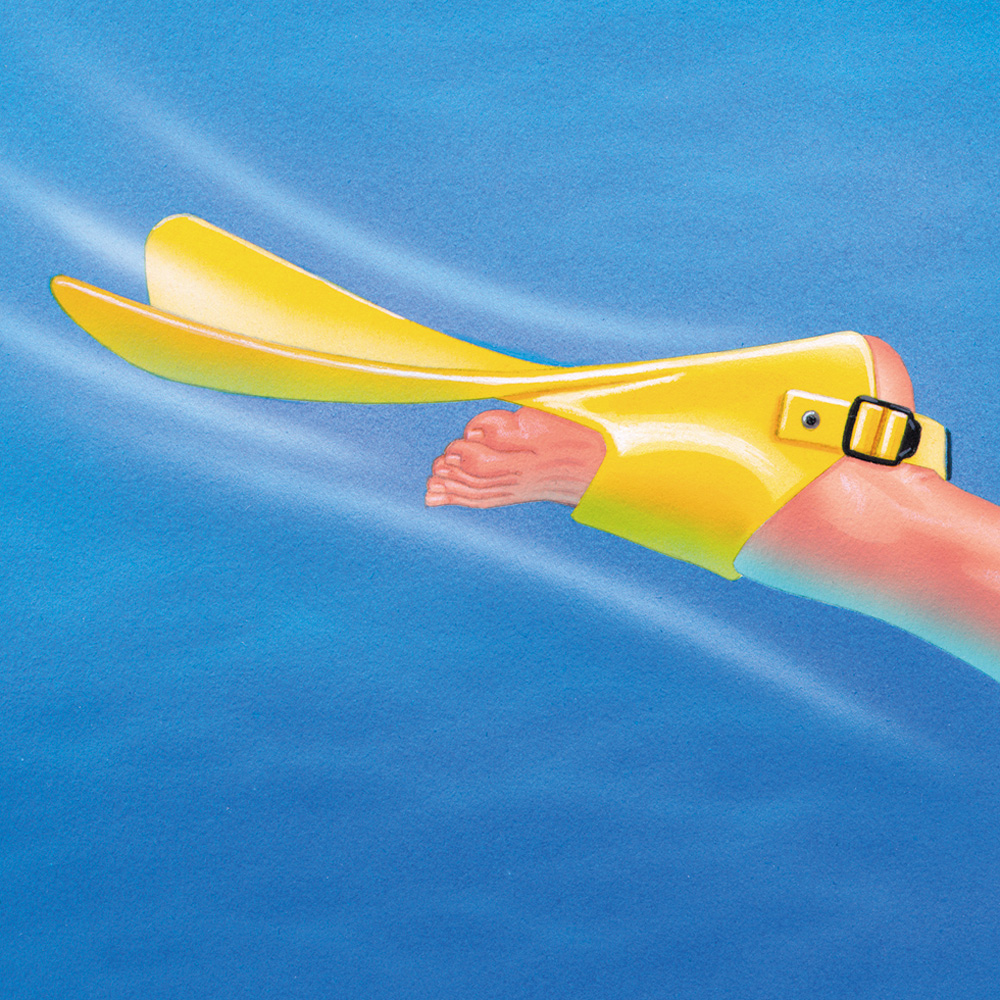
As you kick down, the blade opens out to its maximum surface area, engaging the muscles of the whole leg to push water and provide initial forward thrust.
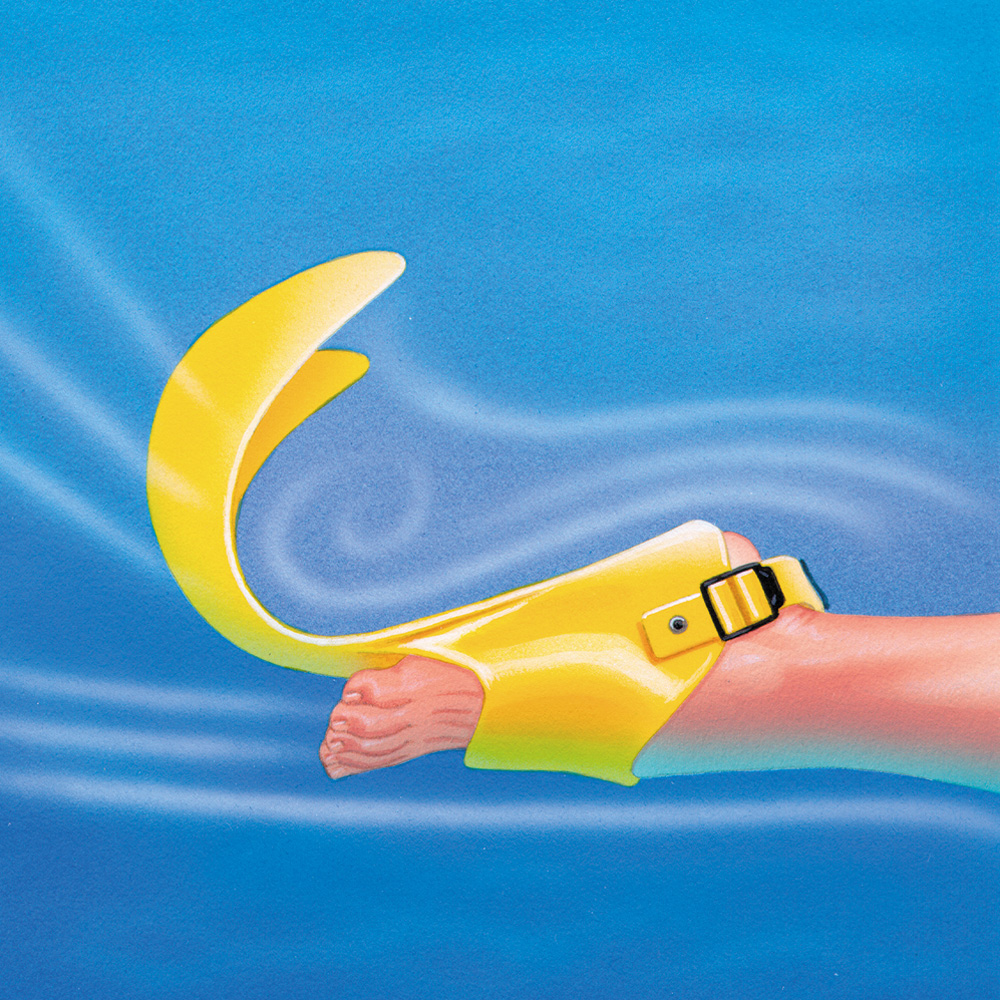
Structure within the Force Fin blade recoils preparing for the blade to snap back to its original position, catapulting you forward and helping with the upward recovery phase of your natural two-stroke kick cycle.
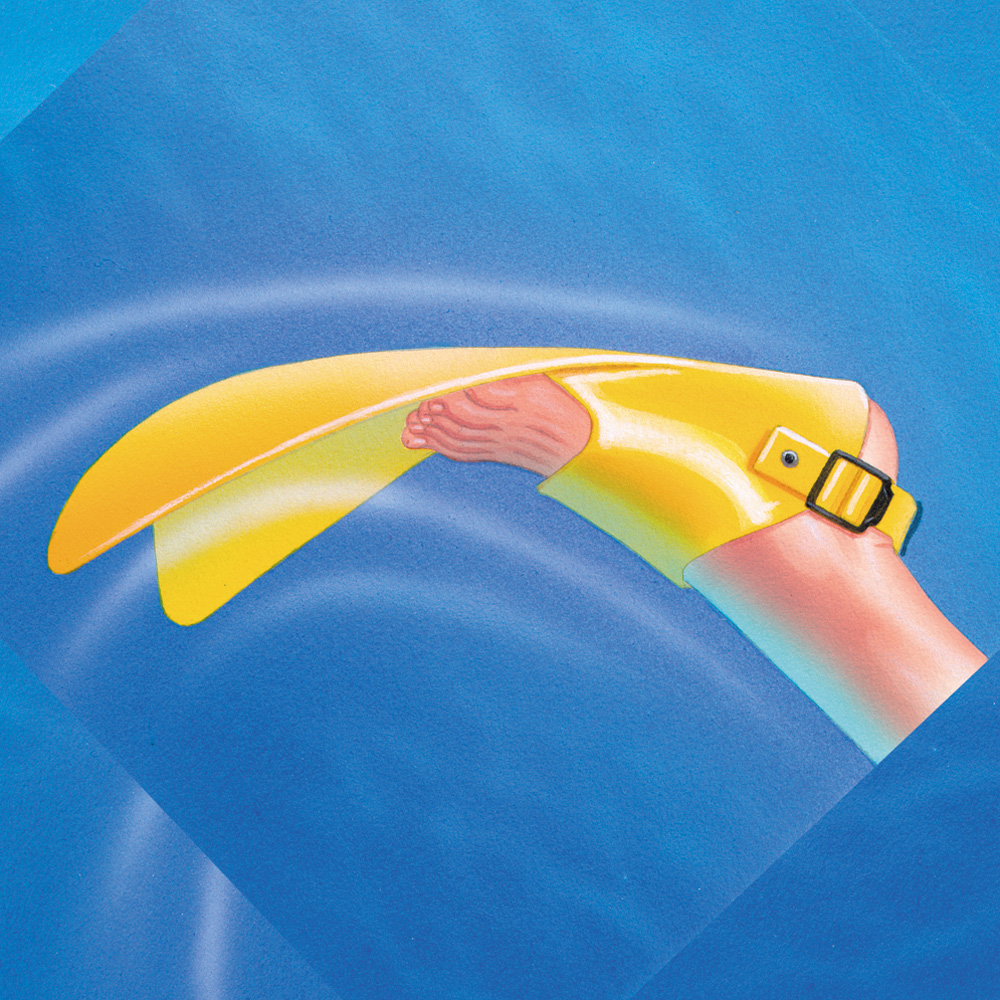
During the recovery, the fin’s tips fold down, channeling the water behind while easing the blade’s movement upward and preparing your leg for the next downward power stroke.
IT’S THE SNAP
PROPULSION & FORCE FINS’ NATURAL TWO-STROKE KICK CYCLE
Divers propel themselves by moving their legs (and the increased surface area of their fins) back and forth against the water with a flutter kick motion. This kicking results in a complex combination of propulsive forces that move the diver forward as well as resistance or drag forces that hinder that movement.
With other fins, virtually all of the propulsion comes from the downward phase of the kick (imagine you’re horizontal in the water with your stomach toward the bottom) and almost none on the upkick. You can test this yourself in the water by trying to kick up, with or without fins. You’ll go nowhere. But simply extend the lower leg down and watch yourself move ahead.
One reason for this uneven propulsion is that humans naturally have more strength when kicking down. The power or downward phase of the kick emphasizes the powerful quadriceps muscle group at the front and side of the upper leg. The kick’s upward phase uses the weaker hamstrings at the back of the thigh and is mainly a recovery movement setting up the leg for the next power phase. The result is a natural two-stroke kicking cycle of power and recovery for each leg. It’s the same with other continuous activities like running, bicycling or swimming where a power/recovery cycle is built-in to conserve your energy.
While most other fins make you work just as hard on the recovery as on the power phase, Force Fins take advantage of this two-stroke cycle and work in harmony with the body’s natural strength. The flexible blade of our Force Fin opens out to its maximum surface area to move a high volume of water during the powerful downward portion of the kick.
At the end of the downstroke, the blade snaps back to its original position, driving water behind at a high velocity and catapulting you forward while at the same time resetting and helping to recover your leg upward for the next downbeat.
During the recovery, the blade folds down, channeling water behind while limiting resistance to conserve your energy. (If you have to put the same amount of energy into both parts of the kick, you fatigue much sooner.)
Force Fins are the only fins that provide propulsion consistent with your natural two-stroke kick cycle to this degree. By providing for more of a separate power and recovery phase, oxygen depletion is reduced, and the onset of fatigue is delayed. The result is that divers can kick continuously for longer periods of time.
THE RIGHT WAY TO KICK
Since the kick is all that divers have to propel themselves, it’s important to do it correctly. Many people believe that divers should use a flutter kick that is deep or wide and slow and pushes water backward. But scientists studying animal locomotion along with swimming theoreticians discovered more than two decades ago that this simplistic “drag-dominated” propulsion theory (the movement of a canoe paddle is an example) does not tell the whole story of how boats, people and most animals move through the water.
Based on a more sophisticated understanding of fluid dynamics and biomechanics, we now know that other hydrodynamic forces such as “lift” propulsion are just as important and in many instances, more important in propelling you efficiently when kicking.
Take a look at how animals do it. Contrasted with the inefficient pushing-backward paddling of ducks, energy efficient fish beat their tails side to side (or up and down in the case of marine mammals like dolphin) in a flapping motion, using a complex mix of lift and drag forces to overcome the resistance of the water and move forward.
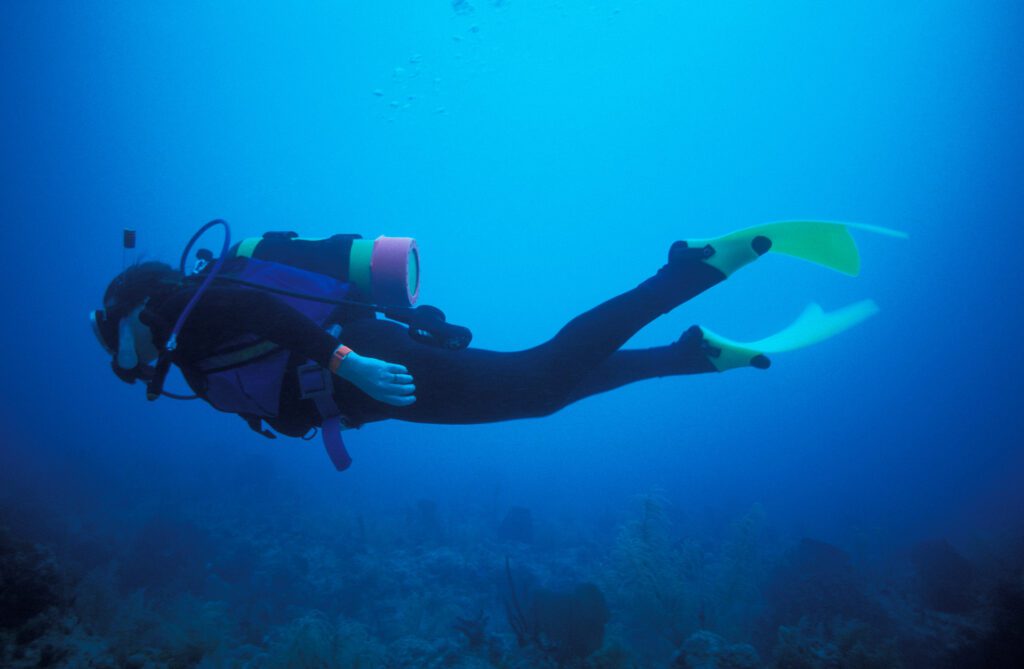
The best way for humans to perform a flapping-style kick is not with a deep and slow kick, but with a shallow and quick motion that’s more streamlined, more energy efficient, and that consumes less air. Of course, some types of fins are better suited for this kind of kicking than others. Force Fins are designed to use this more efficient kick style with its lower energy cost. Our fin generates maximum thrust from minimal vertical movement because of its superb channeling ability, and the rate or frequency of the kick is easily increased because of the recoil and snap of the blade that speeds up the fin’s recovery.
Nature’s Propulsive V-Shape
If you’ve observed fast-swimming fish like tuna, mackerel, jack, pompano, marlin or dolphin fish, you’ve probably noticed that they all have tail fins — caudal fins — that (1) are relatively small compared to the size of their bodies, (2) are shaped like a crescent or in a “V,” and (3) are tall or wide, but short
These constantly swimming fish are models of efficiency, built for a hunting existence, ranging the ocean and able to swim for miles on end looking for food. By contrast, the slower-moving bass, grouper, rockfish, croaker and snapper that tend to be bottom feeders or grazers and are found skulking around reefs and caves have blunt or squared-off tails.
What is nature trying to tell us? First, fins don’t need to be long. Second, the best shape for a hydromechanically efficient tail that reduces resistance or drag is one that is V- or crescent-shaped and with a high aspect ratio (aspect ratio is the wingspan of the tail divided by its average width); that is, a wider but shorter tail like a bird or airplane wing or fish tail — or like the blade of a Force Fin.
Have you ever seen a fast-swimming fish with a blunt or squared-off tail? Neither had we. That’s why we patterned our fins after the split-V shape of fish tails that more efficiently channel the water.
We also noticed that other fins worked basically like boards tied to your feet; they were stiff and inflexible. Again, we took our cue from nature and physics, and we came up with flexible fins using innovative materials like polyurethane, instead of hard plastics.

Water Channeling
An efficient fin helps channel the water by having it flow off the ends and not the sides of the blade, putting more energy into forward propulsion.
With the Force Fin, we invented water channeling by looking at fish tails and forming the blade into a naturally efficient shape. In fact, what really sets our fins apart is the patented blade that curves up and away in a V-shape from the bottom of the foot.
Our snapping, curved-in wing tips help direct the water toward the ends of the fin, just like a bat ray’s wings do. On the recovery, they fold downward, increasing the vertical range of the water channel behind you. More water is moved but with less drag or resistance.
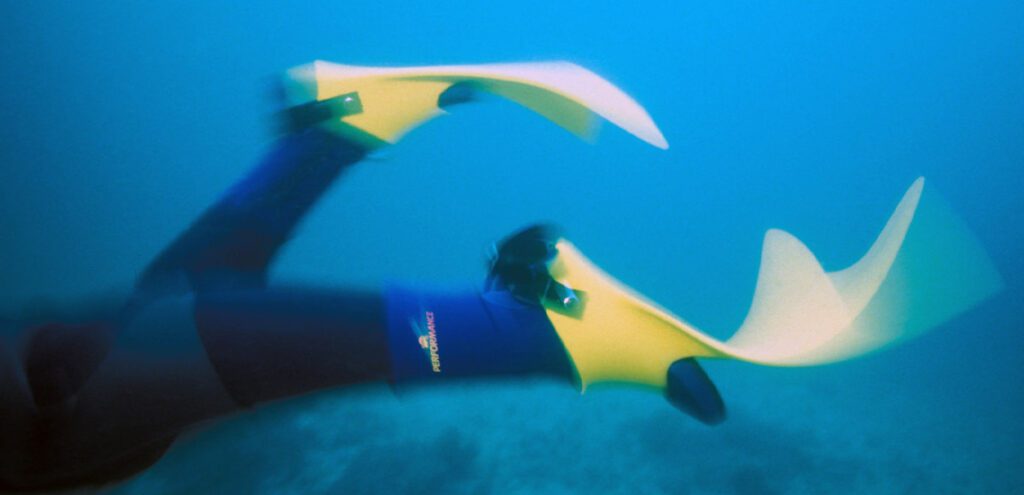
“The curves and flexibility of the Force Fin stabilize your legs, keeping them properly oriented for a more efficient and powerful kick. The drag of other fins causes them to torque to an inefficient angle for generating propulsion, particularly as you tire after kicking a long distance or against a current.”
Convenience
If you’re used to traveling, packing, and lugging around two huge fins, get ready for a surprise when you take along Force Fins. They weigh less than 2 pounds each, are easier to handle, take up less room, are easy to get on and off, and you can even walk forward in them!
Why Force Fins Are Made in the USA
Force Fins are made of an exclusive version of polyurethane that, besides being resistant to ultraviolet radiation, abrasion and chemicals, is heat-treated for 16 hours at temperatures that would melt other fins. Force Fins won’t wilt when exposed to tropical heat, nor will they harden when ice diving. This special heat-treating process allows the molecules to cross-link into long chains, which gives the material its remarkable resiliency and “snap” or elasticity. This adds to the performance and responsiveness of the fin as it allows it to flex and bend over and over without cracking or fatiguing.
Our manufacturing process also results in a material that has outstanding “memory” Force Fins hold their shape in all conditions. In fact, you can take a Force Fin, bend and clamp it in half, leave it for weeks, and when released, it will spring back to its original shape. Try that with any other fin!
Manufactured in the USA and backed by two decades of research and development, Force Fins don’t require any special care and should last season after season, even when used daily.
How well you move through the water is based on many factors including your kicking style and individual characteristics like leg strength and ankle flexibility in addition to your choice of fins. In the underwater world, you need all the help you can get, and we know that you want fins that are comfortable, efficient, durable and reasonably priced. That’s why we invented Force Fins.
Among those divers in the know, Force Fins are a closely held secret. Dedicated Force Fin users are a special group of divers who were willing to try a revolutionary diving product that delivers on its promises. They will never go back to other dive fins again. Would you like to join this elite group? We could go on forever describing the unique benefits of using Force Fins, but there’s only one way to really find out why our fins are the best diving fins in the world: try a pair. You’ll be happy you did.
Explore the ForceFin shop:
-
Adjustable Force Fin
$389.95 -
Bungie Heel Strap Replacement Kit
$47.95 – $57.95 -
Comfort Instep
$37.95 -
EXCELLERATING FORCE FIN
$429.95 – $449.95 -
EXTRA FORCE FIN
$559.95 – $579.95 -
FLOAT TUBE FORCE FIN
$329.95 – $359.95 -
FLYING FORCE FIN
$509.95 – $529.95 -
Foil Force Fin
$409.95 – $429.95 -
Foot Pocket Strap for Float Tube Force Fin Adjustable Force Fin and Rip Force Fin
$20.25

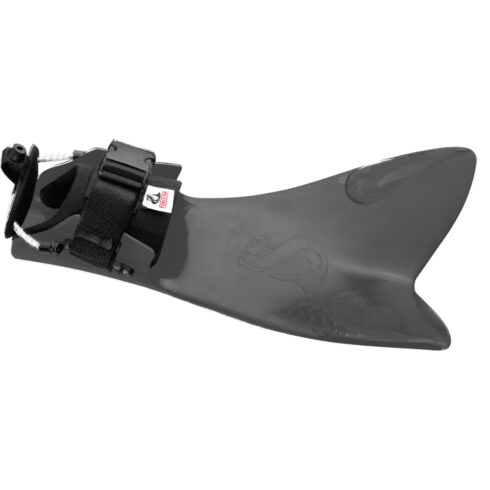
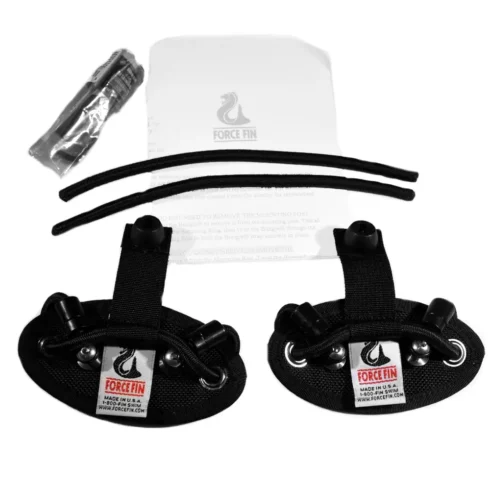
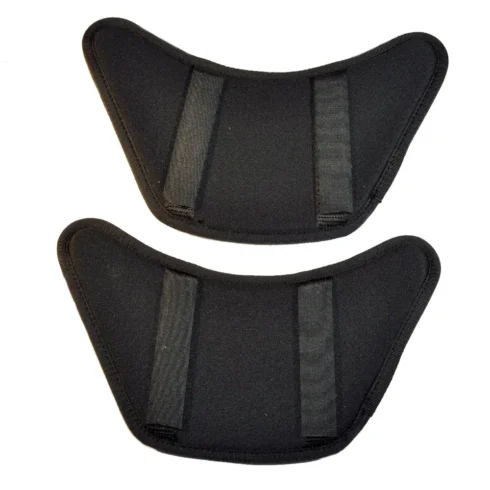
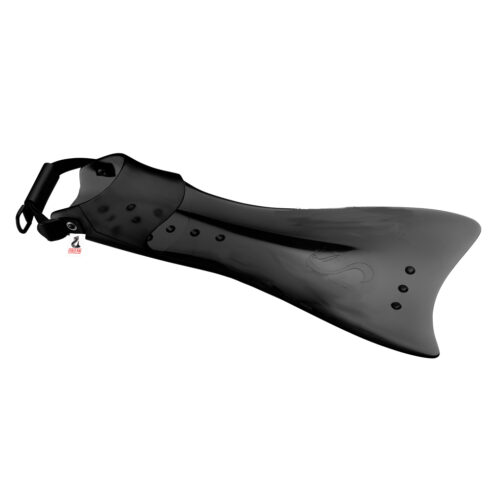
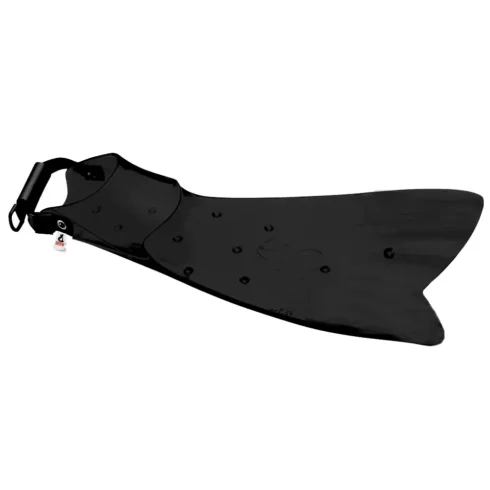
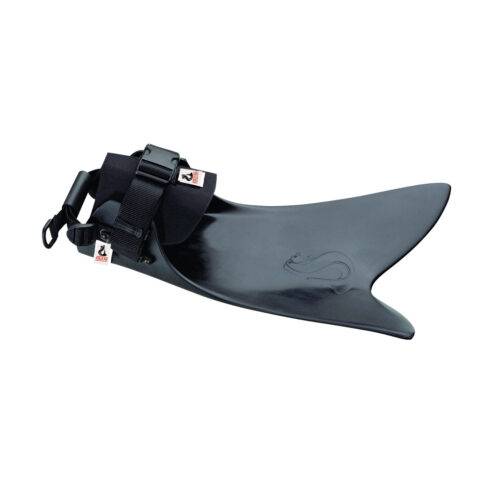
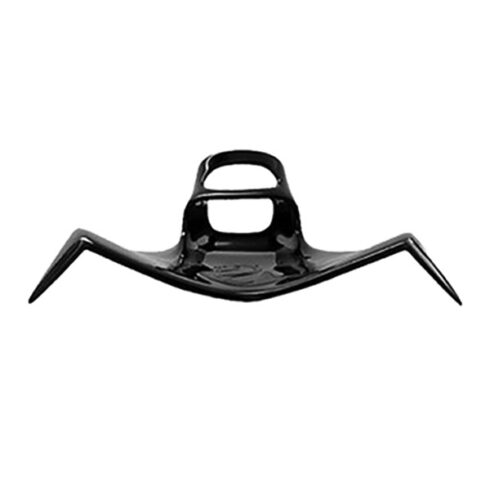
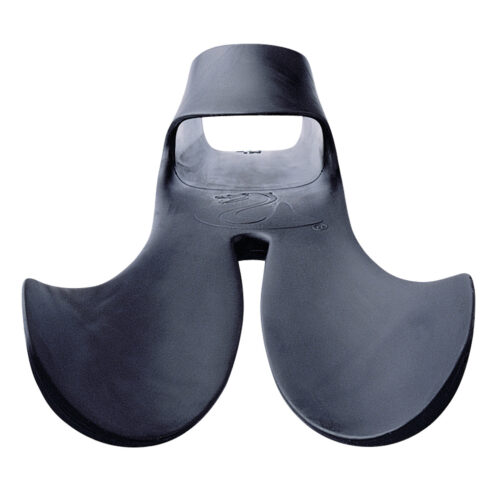
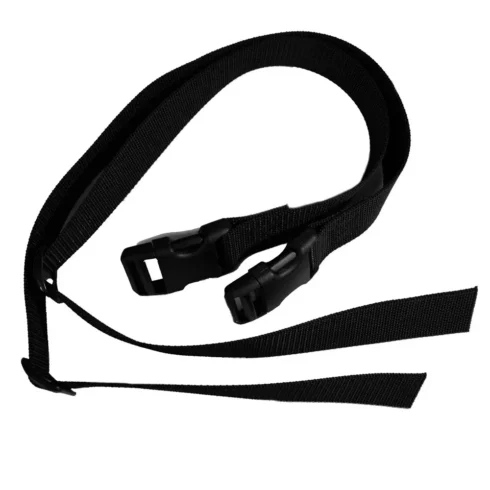
Io ho le force fin da tanti anni, mi trovo benissimo.
Mi piacerebbe provare ad indossarne un altro paio, ma il negozio dove le avevo acquistato ha chiuso.
Non capisco in quale città italiana c’è un negozio dove le posso provare